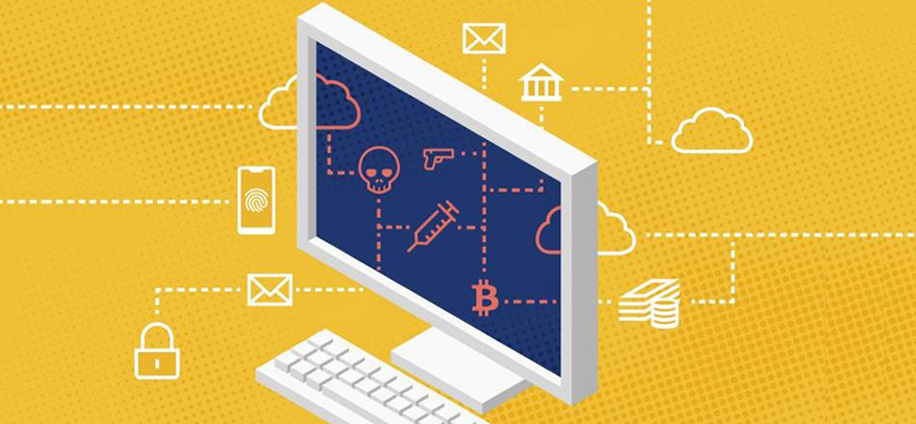The Rise of Ransomware-as-a-Service: How the Dark Web Industrialized Cybercrime

In the early days of hacking, deploying ransomware required technical mastery. Now, thanks to the rise of ransomware-as-a-service (RaaS), anyone with basic access to the dark web and cryptocurrency can launch a devastating cyberattack. It’s plug-and-play extortion, made available through encrypted markets and private Telegram groups.
This isn’t a hacker subculture—it’s a full-blown industry. One where malware is branded, updates are pushed like software patches, and support is offered like any SaaS company. Victims? Corporations. Hospitals. City governments. School districts. No one is off-limits.
RaaS has industrialized cybercrime—and business is booming.
What Is Ransomware-as-a-Service?
RaaS is a model where a developer creates and maintains ransomware, but instead of using it directly, licenses it to “affiliates” who distribute it and carry out attacks. Profits from successful ransom payments are shared between the creator and the attacker.
Typical RaaS Structure
- Developer: Creates, encrypts, and manages the ransomware code
- Admin Panel: Hosts the victim portal, payment interface, and decryption management
- Affiliates: Pay to join or are vetted into the network; they choose targets and deploy attacks
- Profit Split: Typically 70–80% to the affiliate, the rest to the developer
- Support Services: Real-time help, FAQs, and even negotiation scripts for maximizing ransom
It’s not just cybercrime—it’s crime-as-a-platform.
How RaaS Is Sold on the Dark Web
Unlike traditional malware, RaaS is marketed with flair. Dark web forums and invite-only marketplaces host detailed advertisements, testimonials, and even comparisons to rival ransomware brands.
Sales Tactics and Features
- User Dashboards: Let affiliates manage infections, generate payloads, and track income
- Custom Builds: Tailored ransomware for specific target industries or file systems
- Built-in Encryption Algorithms: AES-256 or RSA encryption that locks critical systems
- Demo Videos: Showing encrypted systems, payment portals, and ransom note formats
- Customer Support: Developers often provide 24/7 encrypted chat to assist affiliates with deployments
Joining a RaaS network is as easy as purchasing a VPN subscription—if you have the right invitation.
The Big Names in RaaS
Several ransomware families have become household names in cybersecurity circles due to their impact, scale, and operational sophistication.
Infamous RaaS Platforms
- REvil (Sodinokibi): Targeted Apple, JBS Foods, and law firms—used double extortion tactics
- DarkSide: Behind the Colonial Pipeline attack; their code was slick and PR-conscious
- LockBit: Rapid development cycles, strong encryption, and automation-focused payloads
- BlackCat (ALPHV): One of the first ransomware families written in Rust, with advanced evasion
- Conti: Linked to organized crime and known for leaking entire stolen databases if ransom wasn’t paid
Each operated with the polish of a legitimate company, sometimes offering “press releases” after major breaches.
The Affiliate Economy
Affiliates are the foot soldiers of the RaaS ecosystem. They don’t write code—they rent it. And they are incentivized to scale fast, hit hard, and move on.
How Affiliates Operate
- Phishing Campaigns: Email lures with malicious attachments or macros
- Credential Stuffing: Using stolen login data to gain entry to enterprise networks
- Remote Desktop Protocol (RDP) Exploits: Gaining admin access through unprotected ports
- Supply Chain Infiltration: Injecting ransomware through compromised third-party software
- Lateral Movement: Once inside, they spread the infection across systems before triggering encryption
Once the network is frozen, the affiliate sends the victim to a portal—often hosted on a .onion domain—with payment instructions.
Ransom Notes and Dark Web Negotiations
When a victim opens their encrypted files, they find a message—professional, branded, and often polite. These aren’t threats scribbled in digital crayon. They’re calculated pressure campaigns.
The Typical Ransom Lifecycle
- Infection: Files encrypted, systems disabled
- Ransom Note: Includes Tor link to negotiation portal
- Initial Contact: Victim chats with representative (often a bot at first)
- Price Negotiation: Discounts for fast payment, penalties for delays
- Payment: Usually in Bitcoin or Monero
- Decryption Key Provided (sometimes): If not, the threat escalates—data leak, reputation harm, lawsuits
Victims are pushed to pay quickly. Some RaaS groups even offer “customer service reps” to answer technical questions.
Double Extortion: Encrypt First, Leak Later
Modern ransomware doesn’t just lock systems—it steals data first. This is called double extortion. If victims refuse to pay, attackers post the data on dark web “leak sites.”
What Gets Leaked
- Customer records
- Internal communications
- Financial documents
- R&D and trade secrets
- Personal data of employees and executives
These leak sites often include countdown timers: “Pay in 3 days or we publish everything.” Media outlets and regulators watch these sites for emerging crises.
Monetizing Fear
The psychology behind RaaS is brutal. It targets panic. Victims often pay just to avoid embarrassment, fines, or operational collapse. The ransomware itself is a product—the fear it generates is what sells.
Factors That Increase Payout Likelihood
- Critical infrastructure targets: Hospitals, pipelines, transportation hubs
- High-stakes timing: Attacks just before earnings calls or major events
- Media pressure: Public attention forcing fast resolutions
- Sensitive leaks: HR files, medical data, or legal documents
The RaaS model turns that fear into revenue—and every successful payout reinforces the cycle.
How RaaS Is Changing the Threat Landscape
RaaS has democratized cyberattacks. No longer limited to elite hackers, the barrier to entry is now simply money and motive.
The Broader Impact
- More frequent attacks: Thousands of affiliates launch simultaneous campaigns
- Diversified tactics: Different affiliates test new methods rapidly
- Target saturation: Small businesses, schools, and clinics now face equal risk
- Geopolitical reach: RaaS actors sometimes align with nation-states or political movements
- Law enforcement strain: International investigations lag behind the rapid turnover of infrastructure
RaaS isn’t a tool—it’s an ecosystem. And as long as it pays, it grows.